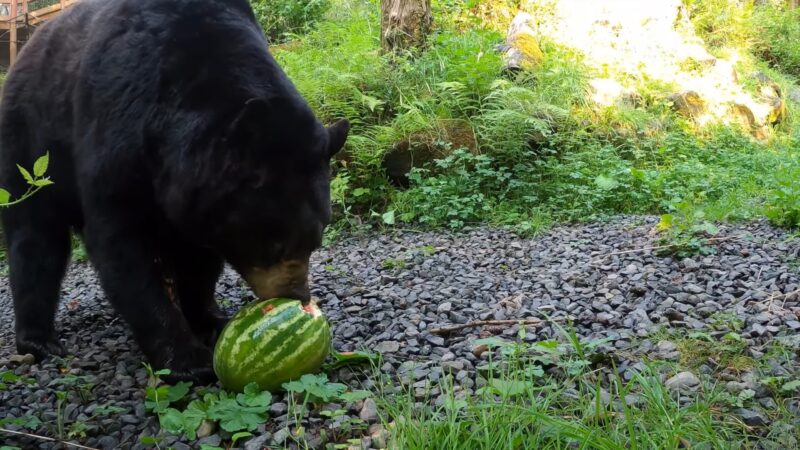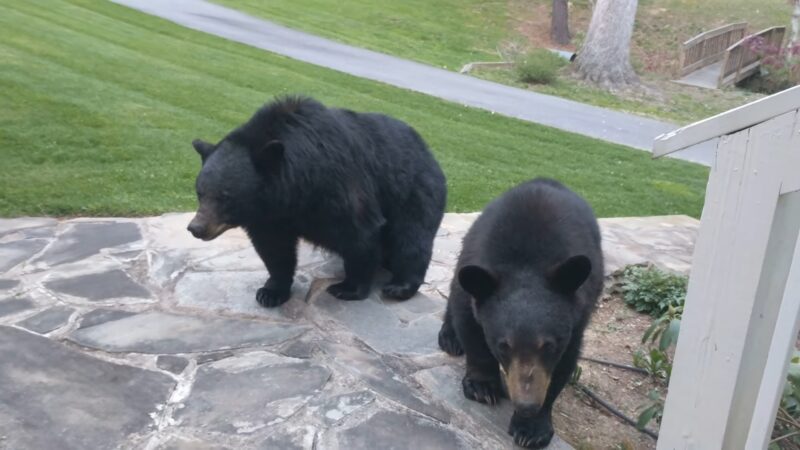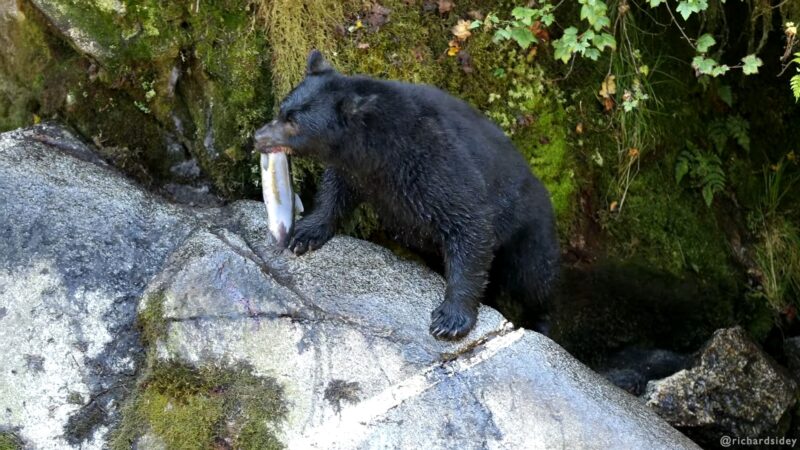Have you ever wondered what black bears eat? These magnificent creatures, roaming the forests and mountains of North America, have a diet as interesting and varied as their habitats.
Join me as we explore the fascinating world of these animals and discover what’s on their menu. From berries to fish, their dietary habits showcase their adaptability and survival skills in the wild.
Key Takeaways
- Black bears are omnivores, eating both plant and animal matter, and they adapt their diet based on seasonal availability.
- Before hibernation, they enter a phase called hyperphagia to build fat reserves and don’t eat during hibernation.
- A significant part of their diet consists of berries, roots, and shoots, especially in spring and summer.
- They also consume meat, including small mammals, fish, and carrion, particularly when plant-based food is scarce.
Omnivorous Nature of Black Bears

Black bears are omnivores, a dietary classification highlighting their ability to consume both plant and animal matter. This versatile diet allows them to adapt to a wide range of environments, from dense forests to mountainous regions.
Their ability to switch between different food sources is key to their survival, especially in areas where food availability changes with the seasons. They have a strong sense of smell, which aids them in locating diverse food items ranging from ripe fruits to animal carcasses.
Seasonal Variations
| Season | Behavior | Dietary Focus | Caloric Intake | Body Weight Changes |
|---|---|---|---|---|
| Fall | Hyperphagia | High-fat and high-sugar foods | Up to 20,000 calories a day | Building fat reserves |
| Winter | Hibernation | None (surviving on fat reserves) | No intake | Losing up to 30% of body weight |
| Spring | Post-Hibernation | Easily digestible foods | Varies | Readjusting to a regular eating schedule |
Plant-Based Diet
Plants form a substantial part of a black bear’s diet, especially in spring and summer when plant-based foods are abundant.
- Berries are a favorite, with black bears often traveling long distances to find berry patches.
- Roots and tubers provide essential nutrients and are often foraged using their strong claws.
- The consumption of leaves and shoots, which are high in protein and easy to digest, is prevalent in the early stages of post-hibernation.
This plant-based diet plays a significant role in the health and growth of black bears, providing essential vitamins and minerals.
Carnivorous Side
While predominantly plant-eaters, black bears also include meat in their diet. They are skilled hunters, often preying on deer fawns and elk calves in spring.
Their fishing skills are particularly notable during salmon spawning seasons, showcasing their ability to catch live fish. Carrion, the carcass of dead animals, is a critical food source, especially in early spring when other food is scarce.
This carnivorous aspect of their diet is crucial for their protein intake and overall nutritional balance.
They Are Opportunistic Feeders
Black bears are the epitome of adaptability when it comes to their diet. In areas close to human settlements, they may rummage through garbage bins or campsites in search of food.
They also consume insects like ants and bees, often breaking into logs or tearing apart bark to find them. Even tree bark and small branches can be a part of their diet, especially in harsher climates where other food sources are not readily available.
What’s Their Impact on the Ecosystem?
Black bears play a vital role in their ecosystems, primarily through their role in seed dispersal. By consuming fruits and berries, they spread seeds over large areas through their feces.
They also help control insect populations and can influence the population dynamics of prey species like deer. Their foraging habits, such as digging, help to aerate the soil, which can benefit plant growth.
Conflicts with Human Food Sources
Encounters with human food sources are a growing concern in areas inhabited by black bears. These encounters can lead to bears becoming habituated to human presence, a situation potentially dangerous for both bears and humans.
Proper garbage management and the use of bear-proof containers are essential in these areas. Educating the public about responsible behavior in bear habitats is crucial to prevent these conflicts.
How to Protect Them?
Conservation efforts for black bears involve habitat preservation and managing human-bear interactions. These efforts include enforcing hunting regulations, protecting bear habitats from deforestation, and reducing road kills.
Wildlife corridors are established to connect fragmented habitats, allowing bears to safely migrate and access different food sources. Public education campaigns are also crucial in promoting coexistence and understanding of black bear behavior.
Safety Tips
When in a bear country, it’s essential to stay alert and informed about bear activity in the area.
- Traveling in groups and making noise on trails can help avoid surprise encounters.
- Understanding bear behavior, such as foraging patterns and signs of agitation, is key to staying safe.
- In case of an encounter, slowly back away and avoid direct eye contact.
Food Habits and Behaviors

Black bears show remarkable behaviors related to their food habits. Their ability to climb trees is often used to access fruits and escape threats. They use their strong front limbs for digging and unearthing roots or overturning rocks to find insects.
Seasonal changes in their behavior, like the shift from solitary foraging to congregating in areas with abundant food sources, are fascinating aspects of their adaptation to the environment.
FAQs

How long do black bears live in the wild?
In the wild, they can live up to 20 years, though the average lifespan is around 10 years. Factors affecting their lifespan include food availability, habitat quality, and human-related threats.
Do black bears have a good sense of smell?
They have an exceptionally keen sense of smell, which is over seven times more sensitive than a domestic dog’s. This heightened sense helps them locate food sources, detect danger, and even communicate with other bears.
Are black bears aggressive towards humans?
Generally, these animals are not aggressive towards humans and tend to avoid contact. However, they can become aggressive if they feel threatened, especially mothers with cubs. It’s important to maintain a safe distance and respect their space.
What time of day are black bears most active?
These animals are primarily crepuscular, meaning they are most active during dawn and dusk. However, their activity patterns can vary based on food availability, season, and human activity in the area.
Can black bears hibernate in warmer climates?
In warmer climates, they may not hibernate or may hibernate for shorter periods. Hibernation is driven by food scarcity and cold weather, so in regions where food is available year-round and temperatures are milder, bears may remain active.
The Bottom Line
In summary, black bears are versatile omnivores, adapting their diet as per the available resources. Their feeding habits reflect their adaptability and the role they play in their ecosystems.
Related Posts:
- Why Do Meerkats Stand Up? - Insights into Their…
- How Good Is a Black Bear’s Sense of Smell? Into the…
- What Biome Do Grizzly Bears Live In? Into the Great…
- Where Can You See Black Bears In America?
- What Do Weasels Eat? - Diet, Lifestyle, and Adaptations
- What Do Foxes Eat? Wild & Urban Fox Diet Info & Habits








